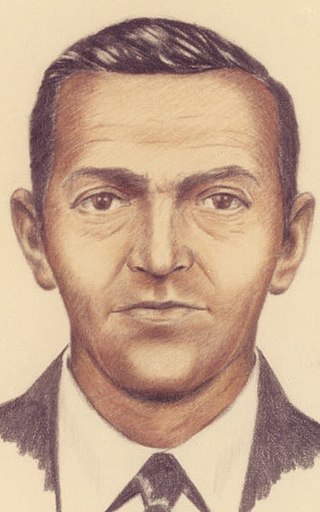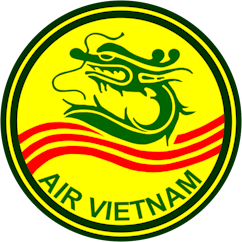
D. B. Cooper is a media epithet for an unidentified man who hijacked Northwest Orient Airlines Flight 305, a Boeing 727 aircraft, in United States airspace on November 24, 1971. During the flight from Portland, Oregon, to Seattle, Washington, the hijacker told a flight attendant he was armed with a bomb, demanded $200,000 in ransom, and requested four parachutes upon landing in Seattle. After releasing the passengers in Seattle, the hijacker instructed the flight crew to refuel the aircraft and begin a second flight to Mexico City, with a refueling stop in Reno, Nevada. About 30 minutes after taking off from Seattle, the hijacker opened the aircraft's aft door, deployed the staircase, and parachuted into the night over southwestern Washington. The hijacker has never been found or conclusively identified.

The Boeing 727 is an American narrow-body airliner that was developed and produced by Boeing Commercial Airplanes. After the heavier 707 quad-jet was introduced in 1958, Boeing addressed the demand for shorter flight lengths from smaller airports. On December 5, 1960, the 727 was launched with 40 orders each from United Airlines and Eastern Air Lines. The first 727-100 rolled out on November 27, 1962, first flew on February 9, 1963, and entered service with Eastern on February 1, 1964.
This is a list of aviation-related events from 1972.
This is a list of aviation-related events from 1971.
This is a list of aviation-related events from 1975.
This is a list of aviation-related events from 1978.

A Cooper vane is a mechanical aerodynamic wedge that prevents the ventral airstair of an aircraft from being lowered in flight.
John Roger Spottiswoode is a Canadian-British director, editor and writer of film and television.

Active from 1951 to 1975, Air Viet Nam was South Vietnam's first commercial air carrier, headquartered in District 1, Saigon. Established under a decree by Chief of State Bảo Đại, the airline flew over two million passengers, throughout the Vietnam War, and until its collapse due to the Fall of Saigon.

An airstair is a set of steps built into an aircraft so that passengers may board and alight the aircraft. The stairs are often built into a clamshell-style door on the aircraft. Airstairs eliminate the need for passengers to use a mobile stairway or jetway to board or exit the aircraft, providing more independence from ground services. Some of the earliest aircraft to feature airstairs were the Martin 2-0-2 and Martin 4-0-4. Some models of the Douglas DC-3 were also retrofitted with airstairs. As airport infrastructure has developed, the need for airstairs has decreased, as jetways or mobile stairways are often available.

Richard Floyd McCoy Jr. was an American aircraft hijacker. McCoy hijacked a United Airlines passenger jet for ransom in April 1972. Due to a similar modus operandi, McCoy has been proposed as the person responsible for the November 1971 hijacking of Northwest Orient Airlines Flight 305, attributed to the still-unidentified "D. B. Cooper".
D. B. Cooper is a media epithet used to describe an unidentified man who hijacked a Boeing 727 on November 24, 1971, extorted a US$200,000 ransom, and parachuted to an unknown fate. He was never seen again, and only $5,880 of the ransom money has been found. The incident continues to influence popular culture, and has inspired references in books, film, and music.
James Meade (1907–1995) was a British economist.
Trans World Airlines Flight 106 was a scheduled passenger flight from Phoenix, Arizona to Chicago, Illinois, in the United States. On November 27, 1971, the Boeing 727 servicing the flight was hijacked by three armed and wanted men at Albuquerque International Sunport in Albuquerque, New Mexico, USA and flown to Havana, Cuba.

The apparent success and instant notoriety of the hijacker known as D. B. Cooper in November 1971 resulted in over a dozen copycat hijackings within the next year all using a similar template to that established by Cooper. Like Cooper, the plan would be to hijack an aircraft, demand a ransom, and then parachute from that aircraft as a method of escape. To combat this wave of extortion hijackings, aircraft were fitted with eponymous "Cooper Vanes," specifically designed to prevent the aft staircase from being lowered in-flight. The Cooper Vane, as well as the widespread implementation of other safety measures such as the installation of Metal detectors throughout American airports, would spell the end of the Cooper copycats.







